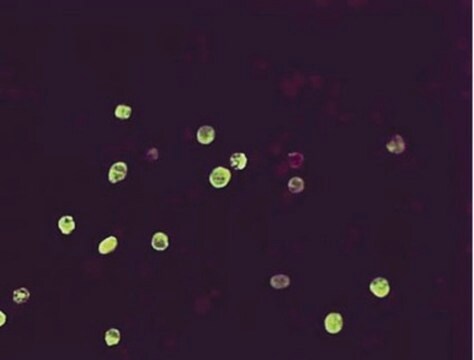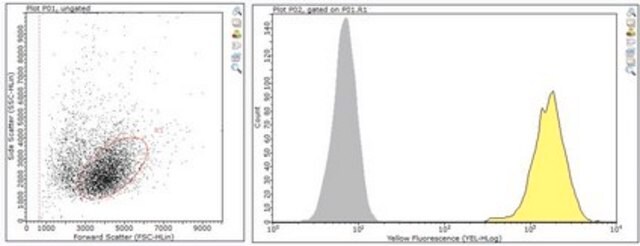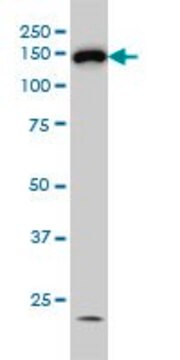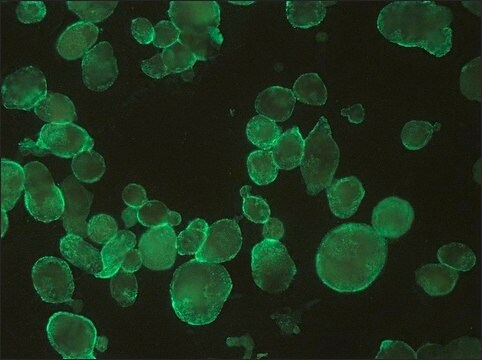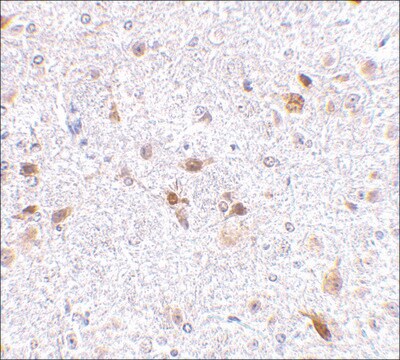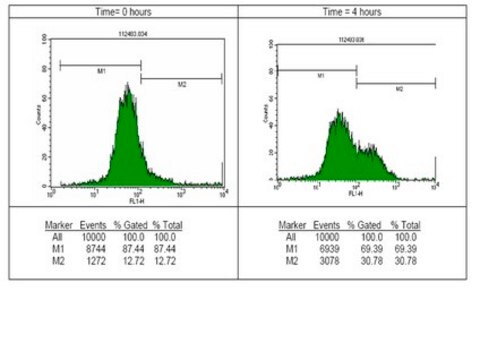MABF1975
Anti-Herpes Simplex Virus Glycoprotein D Antibody, clone LP14
clone LP14, from mouse
Synonym(e):
HSV glycoprotein D
About This Item
Empfohlene Produkte
Biologische Quelle
mouse
Qualitätsniveau
Antikörperform
purified immunoglobulin
Antikörper-Produkttyp
primary antibodies
Klon
LP14, monoclonal
Speziesreaktivität
virus
Speziesreaktivität (Voraussage durch Homologie)
all
Verpackung
antibody small pack of 25 μL
Methode(n)
immunocytochemistry: suitable
inhibition assay: suitable
western blot: suitable
Isotyp
IgG2aκ
NCBI-Hinterlegungsnummer
UniProt-Hinterlegungsnummer
Versandbedingung
ambient
Posttranslationale Modifikation Target
unmodified
Allgemeine Beschreibung
Spezifität
Immunogen
Anwendung
Entzündung & Immunologie
Western Blotting Analysis: A representative lot detected Herpes Simplex Virus Glycoprotein D in Western Blotting applications (Lau, S.Y., et. al. (2015). Viruses. 7(3):915-38; Zenner, H.L., et. al. (2011). J Virol. 85(16):8012-21; Pawliczek, T., et. al. (2009). J Virol. 83(21):11254-64).
Western Blotting Analysis: A representative lot detected Herpes Simplex Virus Glycoprotein D in Western Blotting applications (Ren, Y., et. al. (2012). J Gen Virol. 93(Pt 2):319-29).
Immunocytochemistry Analysis: A representative lot detected Herpes Simplex Virus Glycoprotein D in Immunocytochemistry applications (Lau, S.Y., et. al. (2015). Viruses. 7(3):915-38).
Inhibition Analysis: A representative lot inhibited the fusion of cells infected with HSV-1. (Minson, A.C., et. al. (1986). J Gen Virol. 67(6); 1001-1013.
Qualität
Western Blotting Analysis: A 1:2,000 dilution of this antibody detected Herpes Simplex Virus Glycoprotein D in HEK293T cell lysate transfected with HSV gD.
Zielbeschreibung
Physikalische Form
Lagerung und Haltbarkeit
Sonstige Hinweise
Haftungsausschluss
Sie haben nicht das passende Produkt gefunden?
Probieren Sie unser Produkt-Auswahlhilfe. aus.
Lagerklassenschlüssel
12 - Non Combustible Liquids
WGK
WGK 2
Flammpunkt (°F)
does not flash
Flammpunkt (°C)
does not flash
Analysenzertifikate (COA)
Suchen Sie nach Analysenzertifikate (COA), indem Sie die Lot-/Chargennummer des Produkts eingeben. Lot- und Chargennummern sind auf dem Produktetikett hinter den Wörtern ‘Lot’ oder ‘Batch’ (Lot oder Charge) zu finden.
Besitzen Sie dieses Produkt bereits?
In der Dokumentenbibliothek finden Sie die Dokumentation zu den Produkten, die Sie kürzlich erworben haben.
Unser Team von Wissenschaftlern verfügt über Erfahrung in allen Forschungsbereichen einschließlich Life Science, Materialwissenschaften, chemischer Synthese, Chromatographie, Analytik und vielen mehr..
Setzen Sie sich mit dem technischen Dienst in Verbindung.